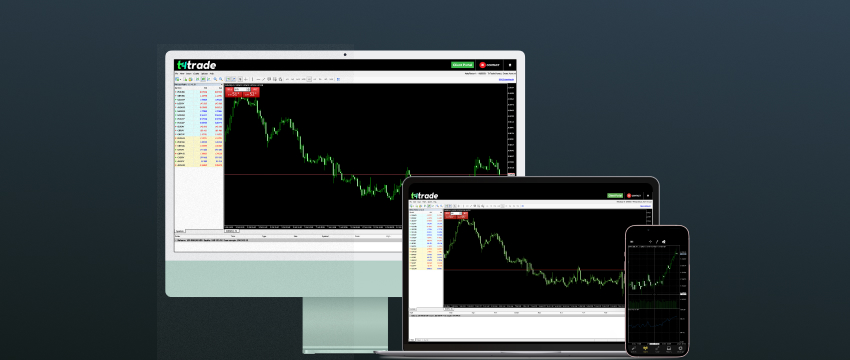In trading, there’s a lot of talk about patterns, candlesticks, and moving averages. However, the market can accelerate due to inflation data, central bank announcements, or oil price spikes from OPEC. In such cases, technical analysis alone falls short without a framework. That’s where fundamental analysis comes in: understanding why prices move, what forces drive them, and what might happen next. It does not replace technical analysis; it enhances it. Which is why, for many consistent traders, fundamental analysis is their secret weapon.
Next, we’ll provide a practical guide on integrating it into your trading. The guide includes examples and planning tips.
What is fundamental analysis (and what is it not)?
Fundamental analysis is a method that examines economic, geopolitical, and business factors affecting supply and demand. It helps estimate an asset’s intrinsic value and its likely future price behavior.
For example, in forex we would be referring to growth, inflation, interest rates, employment rates and trade balance. In terms of commodities, it would be about supply/demand, inventories, e provider decisions. In índices y acciones, it would be about profits, cash flows and expectations.
Basically, fundamental analysis is a method for transforming data into likely scenarios and, therefore, advantageous decision-making.
Interest rates and expectations
Most major movements revolve around a straightforward concept: real interest rates and market expectations around them.
Higher inflation prompts central banks to tighten policy, lifting yields. In FX, currencies with rising rate expectations usually strengthen. When the economy cools and the central banks hint at cutbacks, the markets reverse these trends.
That is why data such as CPI, PPI, GDP, payrolls/employment rates y PMIs matter: they reshape expectations. In practice, you must compare actual and forecast data and evaluate what changes once the results are revealed. How is the market repricing the central bank’s next decision?

An overview of different types of assets
Let’s start with currencies. With them, interest rate differentials and bank policies set the pace. Central banks that are more aggressive than their counterparts tend to support their own currency.
On the other hand, gold reacts differently when it comes to volatility: firstly, when interest rates fall, gold tends to find more support, and secondly, the dollar, which acts as a tailwind or headwind depending on the moment.
In oil markets, supply and demand dominate. Cuts, inventories, disruptions, or economic shifts can quickly change the balance. For indices, the common thread is expected profit and cost of capital.
Understanding which driver dominates at any given time might be a great way to avoid trading blindly. It really is a matter of not being ill-prepared when making such important decisions.
How to build your dashboard without getting too overwhelmed in fundamental analysis
An effective chart routine doesn’t demand hours of study, but good discipline.
Start by reviewing the economic calendar at the turn of each week and day, underlining high-impact events for your assets. Note the bias of each central bank on your computer or notebook, whether rising, pausing, or changing policy.
Draw up a brief series of scenarios for the two or three closest market-moving events. What happens if the data comes in line, above or below? Which assets would be most affected? What reaction would be consistent in each case? Don’t shy away from being thorough.
Finally, align that map with your strategy. If a scenario plays out, identify the zone where an entry makes sense. Decide where to disregard the idea and how to measure risk.
Everything fits on one page. The key is to be consistent and to keep at it every day!
Build your script for calendar events
Ahead of data being released, identify your forecasted expected range; the wider the spread, the greater the risk for volatility. Decide whether you are going to trade the event or avoid it. Remember that both options are valid, but improvising is not!
During the release, accept that whipsaw candles and wider spreads may develop; if you plan to participate, reduce your position size, avoid chasing the price and wait for minimal confirmation.
Afterwards, assess whether the reaction was consistent with your analysis: sometimes the first movement is market noise, and the market reinterprets it within a few minutes.
Where do fundamental and technical analysis meet?
Fundamental analysis helps you select assets with real catalysts; technical analysis gives you the timing and location.
Use the calendar to narrow down what to focus on today; use charts to wait for the right moments. If the catalyst is compelling (such as a policy shift) adjust the size to the expected volatility.
The goal isn’t to trade every news report, but to align context and actual implementation so that your portfolio may improve.
Common mistakes when using fundamental analysis
The most common mistake is to be infatuated with a certain narrative and forcing it when the market has already moved on.
Another common one is trading headlines without considering expectations: It is not the number that matters, but how much it staggers the consensus.
It is also common to confuse correlation and causation; if your anticipated prediction is bullish and the price does not respond, perhaps that scenario was already priced in or the catalyst is competing with stronger factors.
When these mistakes happen, just go back to ground zero and allow the price to settle down; keep risk under control.

A twenty-minute daily routine
Ten minutes for the calendar and central bank bias; five minutes to draw up two scenarios per asset and assign levels; five minutes to define the maximum risk per trade and per day.
In the closing hours, make some brief notes about what happened and what you would improve. This log turns intuition into judgement.
In a few weeks, you will notice that you are reducing impulsive trades and increasing those that make sense both macroeconomically and technically.
Intraday or swing trading
Intraday trading thrives on big breaks and shifts in momentum during a session; it requires quick responses, smaller positions, and tactical exits.
Swing trading feeds off more persistent macro trends and weekly catalysts; it requires patience and larger time frames.
Both styles are based on the same framework: calendar, scenarios, levels, execution, e review. Same method, different scale.
Managing risk
Research is great, but it serves little purpose if you don’t know how to manage risk. In order to do that, define a fixed percentage per trade, calculate the size based on the distance to your logical stop, and consider that there might be good and bad streaks.
During economic calendar events, keep in mind that spreads might widen and slippage might happen. If you decide to dive in, cut down on your risk exposure and avoid improvising. Save some capital for later: often, the second wave after a big headline provides cleaner entry points than the first one.
Context is king
Fundamental analysis is not about predicting the future; it provides context so that when the market moves, you will already have a plan.
It helps you sort out where to focus your attention, how to react to data, and how to align your technical entries with a coherent macro picture.
Descargo de responsabilidad: Este material tiene fines informativos y educativos generales únicamente y no debe considerarse como asesoramiento ni recomendación de inversión. T4Trade no se hace responsable de los datos proporcionados por terceros a los que se hace referencia o que aparecen en hipervínculos en esta comunicación.




